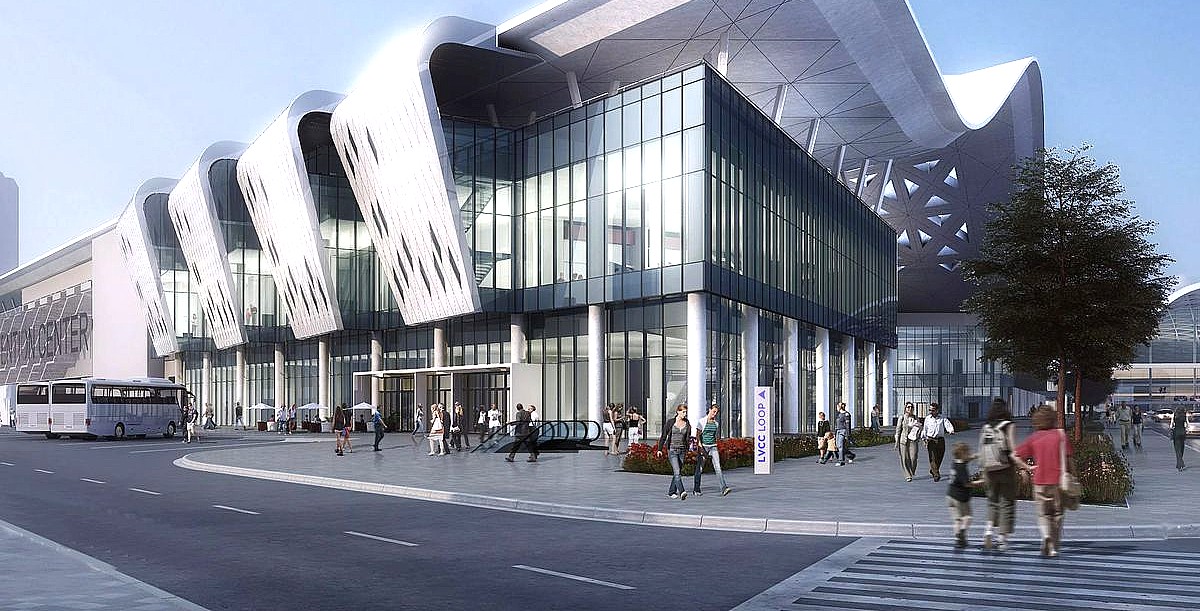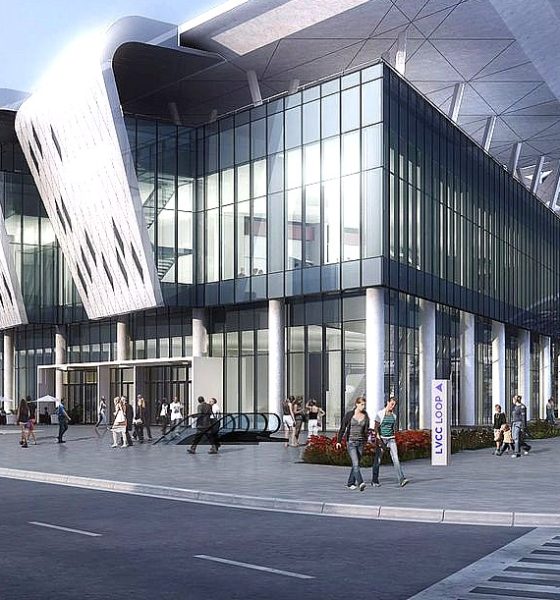

News
Elon Musk’s Boring Company meets opposition over Las Vegas tunnel bid
The Boring Company’s planned 2-mile Las Vegas tunnel is seeing some opposition, with some members of the city’s Convention and Visitors Authority (LVCVA) expressing their reservations about the tunneling startup’s capability to deliver on the project.
Las Vegas Convention and Visitors Authority CEO Steve Hill has stated that a contract has been negotiated with The Boring Company to build a transport tunnel that could move people around the Las Vegas Convention Center. The cost of the project is estimated to be $52.5 million, far less than the cost of a conventional above-ground transit system. In the event that The Boring Company does not receive a certificate of occupancy for the tunnel system, the LVCVA will get back its entire investment.
While the Boring Company’s deal appears to be a cost-effective proposal that carries little financial risk to the LVCVA, some board members have expressed their reservations for the project nonetheless. Board members Michele Fiore and Carolyn Goodman, for one, recently spoke in favor of an alternative proposal from Austria-based Doppelmayr Garaventa Group, which involves the construction of an above-ground transit system.
This Monday, Goodman sent an email to her fellow board members urging them to support the proposal from the Austria-based company, according to a report from the Las Vegas Sun. In her message, Goodman cited Doppelmayr’s experience in the transport industry, comparing it favorably against The Boring Company’s inexperience.
“Doppelmayr has been in existence for 125 years. They already have projects here that are operating successfully. The Boring Co. is three years old and has yet to deliver a final package on anything. (The tourism and convention business) is a $60 billion industry that every part of this state relies on for dollars. This is really about deliverability — we can’t fail on this,” she wrote.
Doppelmayr’s initial proposal to the LVCVA involved the creation of an above-ground transit system that would cost an estimated $215 million to complete. In her letter to the LVCVA’s board, Goodman argued that the Austria-based company would have been able to build a transport system for as little as $85 million. The board member even invited Doppelmayr CEO Markus Schrentewein to give a presentation at a board meeting on Tuesday.
“During the bidding process, if we would have been given the chance to present and explain in more detail our proposal, I believe we would have come up with a more favorable project for the LVCVA campus,” the Doppelmayr CEO said.
Michele Fiore, who also works as a councilwoman in Las Vegas, also expressed her reservations over the Boring Company’s proposal. In a statement to local media, Fiore echoed Goodman’s sentiments about the Austria-based company’s experience. “The risk of the Boring Co. is quite high, while the risk with Doppelmayr is quite low. How do we justify not really looking at Doppelmayr as a solid and proven company? I’m not so sure the Boring Co. is the company to do this job,” she said.
Hill, for his part, noted that The Boring Company’s proposal was initially selected due to cost, timing, and scalability. At $52.5 million, the tunneling startup’s plan is cost-effective, and the project could be completed while the campuses’ expansion work is ongoing. The Boring Company’s transport tunnel could also be expanded to other areas of Las Vegas in the future. “It’s significantly less expensive than any of the alternatives that we reviewed. Frankly, for the funding capacity of the LVCVA, this is the system that we could go forward with. We’re going to bring a contract next week that will eliminate all financial risk from the LVCVA,” Hill said.
In a previous statement, Boring Company President Steve Davis described the Las Vegas project as an opportunity for both the tunneling startup and the city. “People will be excited. They will ride it, and if they like it, we’ll probably get more interest. Nevada looks for a responsible way to say yes. We think it offers a lot of opportunity. I think others see that as well. And we will put in that work to see if it’s the right choice for Las Vegas,” he said.
A Las Vegas Convention and Visitors Authority spokesperson has noted that the board will vote on the Boring Company’s proposal on May 22, when the board meets for a budget hearing.

Elon Musk
Elon Musk’s xAI closes upsized $20B Series E funding round
xAI announced the investment round in a post on its official website.

xAI has closed an upsized $20 billion Series E funding round, exceeding the initial $15 billion target to fuel rapid infrastructure scaling and AI product development.
xAI announced the investment round in a post on its official website.
A $20 billion Series E round
As noted by the artificial intelligence startup in its post, the Series E funding round attracted a diverse group of investors, including Valor Equity Partners, Stepstone Group, Fidelity Management & Research Company, Qatar Investment Authority, MGX, and Baron Capital Group, among others.
Strategic partners NVIDIA and Cisco Investments also continued support for building the world’s largest GPU clusters.
As xAI stated, “This financing will accelerate our world-leading infrastructure buildout, enable the rapid development and deployment of transformative AI products reaching billions of users, and fuel groundbreaking research advancing xAI’s core mission: Understanding the Universe.”
xAI’s core mission
Th Series E funding builds on xAI’s previous rounds, powering Grok advancements and massive compute expansions like the Memphis supercluster. The upsized demand reflects growing recognition of xAI’s potential in frontier AI.
xAI also highlighted several of its breakthroughs in 2025, from the buildout of Colossus I and II, which ended with over 1 million H100 GPU equivalents, and the rollout of the Grok 4 Series, Grok Voice, and Grok Imagine, among others. The company also confirmed that work is already underway to train the flagship large language model’s next iteration, Grok 5.
“Looking ahead, Grok 5 is currently in training, and we are focused on launching innovative new consumer and enterprise products that harness the power of Grok, Colossus, and 𝕏 to transform how we live, work, and play,” xAI wrote.
Investor's Corner
Tesla gets price target bump, citing growing lead in self-driving

Tesla (NASDAQ: TSLA) stock received a price target update from Pierre Ferragu of Wall Street firm New Street Research, citing the company’s growing lead in self-driving and autonomy.
On Tuesday, Ferragu bumped his price target from $520 to $600, stating that the consensus from the Consumer Electronics Show in Las Vegas was that Tesla’s lead in autonomy has been sustained, is growing, and sits at a multiple-year lead over its competitors.
CES 2026 validates Tesla’s FSD strategy, but there’s a big lag for rivals: analyst
“The signal from Vegas is loud and clear,” the analyst writes. “The industry isn’t catching up to Tesla; it is actively validating Tesla’s strategy…just with a 12-year lag.”
The note shows that the company’s prowess in vehicle autonomy is being solidified by lagging competitors that claim to have the best method. The only problem is that Tesla’s Vision-based approach, which it adopted back in 2022 with the Model 3 and Model Y initially, has been proven to be more effective than competitors’ approach, which utilizes other technology, such as LiDAR and sensors.
Currently, Tesla shares are sitting at around $433, as the company’s stock price closed at $432.96 on Tuesday afternoon.
Ferragu’s consensus on Tesla shares echoes that of other Wall Street analysts who are bullish on the company’s stock and position within the AI, autonomy, and robotics sector.
Dan Ives of Wedbush wrote in a note in mid-December that he anticipates Tesla having a massive 2026, and could reach a $3 trillion valuation this year, especially with the “AI chapter” taking hold of the narrative at the company.
Ives also said that the big step in the right direction for Tesla will be initiating production of the Cybercab, as well as expanding on the Robotaxi program through the next 12 months:
“…as full-scale volume production begins with the autonomous and robotics roadmap…The company has started to test the all-important Cybercab in Austin over the past few weeks, which is an incremental step towards launching in 2026 with important volume production of Cybercabs starting in April/May, which remains the golden goose in unlocking TSLA’s AI valuation.”
Tesla analyst breaks down delivery report: ‘A step in the right direction’
Tesla has transitioned from an automaker to a full-fledged AI company, and its Robotaxi and Cybercab programs, fueled by the Full Self-Driving suite, are leading the charge moving forward. In 2026, there are major goals the company has outlined. The first is removing Safety Drivers from vehicles in Austin, Texas, one of the areas where it operates a ride-hailing service within the U.S.
Ultimately, Tesla will aim to launch a Level 5 autonomy suite to the public in the coming years.
Elon Musk
Elon Musk’s Biggest Revelations on AI, Robots, and the Future of Work from the Moonshots Podcast

Elon Musk’s appearance on the Moonshots with Peter Diamandis podcast was packed with bold predictions, candid admissions, and surprising tech insights. The nearly three-hour conversation covered everything from artificial intelligence to humanoid robots, geopolitics, and the future of work. Here are the top 10 most intriguing takeaways:
-
Aggressive AGI Timeline Predictions
Musk offered a detailed view on when artificial general intelligence (AGI) could emerge, suggesting it may arrive sooner than many expect, emphasizing both transformative potential and risks.
-
U.S. vs. China in the AI Race
He discussed the strategic competition between the United States and China over AI development, noting that geopolitical dynamics will shape how and who leads in the next decades.
-
Future of Job Markets
Musk touched on how AI and automation could reshape employment, predicting massive boosts in productivity alongside potential disruptions in traditional work structures.
-
Clean Energy Transition
A recurring theme was the role of clean energy in future economies, with Musk reiterating the importance of scaling sustainable power generation and storage.
-
Humanoid Robots Are Coming
On the podcast, Musk elaborated on Tesla’s work on humanoid robots, hinting at timelines and applications that go beyond factories to general-purpose assistance.
-
Tesla Roadster “Last Human-Driven Car”
Outside the core discussion topics, Musk teased features of the upcoming Tesla Roadster — calling it “the best of the last of the human-driven cars” and suggesting safety won’t be its main selling point.
-
The Role of AI in Clean Energy and Robotics
Linking AI to both energy optimization and robotics, Musk explained how smarter systems could accelerate decarbonization and task automation across industries.
-
U.S. Innovation Leadership
Musk argued that maintaining American leadership in key tech sectors like AI, space, and robotics should be a national priority, with thoughtful policy and investment.
-
Job Creation vs. Job Elimination
While acknowledging automation’s disruptive effects, he also outlined scenarios where new industries and opportunities could emerge, particularly in AI, space, and advanced manufacturing.
-
Long-Term Vision for Humanity
Throughout the conversation, Musk revisited his long-term philosophical views — including a belief in humanity’s responsibility to become a multi-planetary and technologically empowered species.
Whether you agree with Musk’s optimism or not, the podcast offers a window into the thinking of one of the most influential figures in tech today, in and why his visions continue to spark debate and inspiration.








